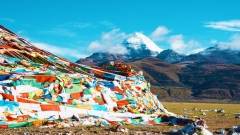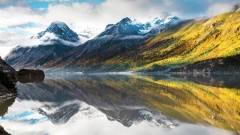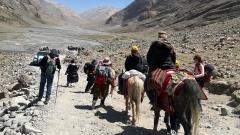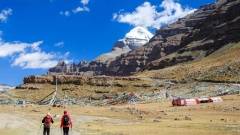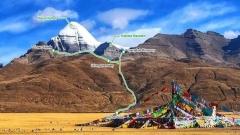Mount Kailash and Lake Manasarovar, set on the Tibetan Plateau, are sacred to multiple religions and admired for their stunning beauty. Pilgrims and travelers come here for spiritual inspiration, breathtaking landscapes, and cultural depth. This guide highlights their geography, religious significance, travel routes, trekking advice, and practical tips to help you plan an unforgettable journey.
Geographic & Cultural Significance
Mount Kailash
Mount Kailash rises to 6,638 meters (21,778 feet) above sea level in western Tibet. Unlike Everest or other Himalayan giants, Kailash is unclimbed, considered so sacred that attempts to scale it are forbidden. The mountain’s symmetrical pyramid shape, capped with eternal snow, makes it appear like a natural stupa—a spiritual beacon dominating the surrounding plateau.
For four religions, Kailash is the center of the universe:
-
Buddhism: Believed to be the abode of Demchok (Chakrasamvara), a deity representing supreme bliss.
-
Hinduism: Regarded as Mount Meru, the axis of the universe and the dwelling of Lord Shiva.
-
Jainism: Where their first Tirthankara, Rishabhadeva, attained liberation.
-
Bön: Tibet’s indigenous religion sees Kailash as the seat of spiritual power.
Lake Manasarovar
At the foot of Kailash lies Lake Manasarovar, the highest freshwater lake in the world at 4,590 meters (15,060 feet). With crystal-clear waters that change color from deep blue to emerald green depending on the sunlight, the lake is a vision of purity. Pilgrims believe bathing in its waters washes away sins, while drinking from it brings blessings of wisdom and clarity.
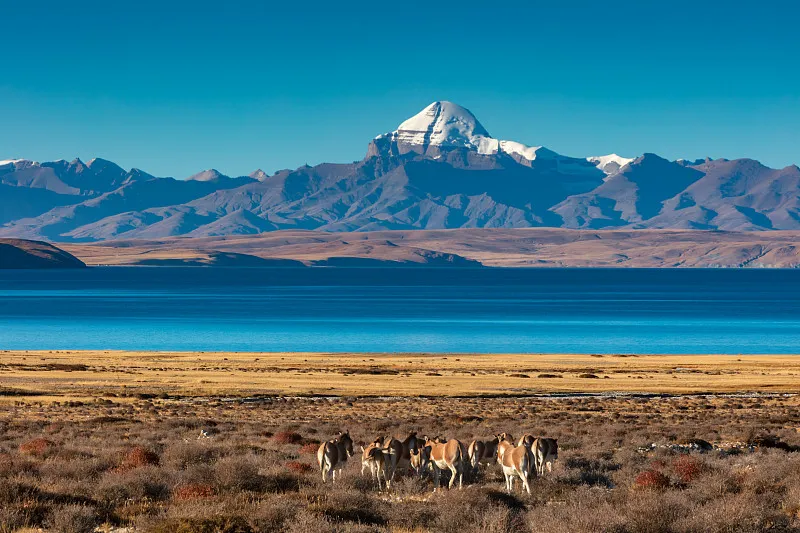
Manasarovar
Best Time to Visit
Weather conditions in this high-altitude region vary dramatically, making careful planning essential:
-
Spring (May–June): One of the best times, with clear skies and milder temperatures. Ideal for trekking and photography.
-
Summer (July–August): Warmer but can bring heavy rains and muddy trails. Still, the landscapes are lush and vibrant.
-
Autumn (September–October): Another excellent season, with crisp air, golden scenery, and fewer crowds.
-
Winter (November–April): Bitterly cold and often inaccessible due to snow. Not recommended for travel.
📌 Special Note: The Year of the Horse (next in 2026) is particularly auspicious. Completing one kora (circuit) around Mount Kailash during this year is believed to bring the same merit as thirteen circuits in any other year.
Travel Routes to Kailash & Manasarovar
Getting to this remote region is part of the adventure itself. Most travelers start from Lhasa, the capital of Tibet, and gradually make their way west.
Common Itinerary Highlights
-
Lhasa (3,650m): Acclimatize while visiting landmarks like Potala Palace, Jokhang Temple, and Barkhor Street.
-
Gyantse & Shigatse: Explore monasteries such as Tashilhunpo while traveling through scenic valleys.
-
Saga & Paryang: Remote Tibetan towns serving as overnight stops.
-
Darchen (4,575m): Base camp for Mount Kailash kora.
The overland journey from Lhasa to Kailash takes about 4–5 days, with stops for sightseeing and altitude acclimatization.
Pilgrimage Experience: The Kailash Kora
One of the holiest pilgrimages in the world is the kora around Mount Kailash. This 52-kilometer (32-mile) trek typically takes three days, though some devoted pilgrims complete it in a single day, and others prostrate themselves along the entire route—a practice that can take weeks.
Main Sections of the Trek
-
Darchen to Dirapuk Monastery (20 km): Gentle ascent along the Lha Chu Valley with Kailash looming ahead. Overnight at Dirapuk with spectacular views of the north face.
-
Dirapuk to Zuthulpuk via Dolma-La Pass (18 km): The toughest section, crossing Dolma-La (5,630m). Pilgrims leave prayer flags and offerings at the pass before descending past the sacred Lake Gauri Kund.
-
Zuthulpuk to Darchen (14 km): A gradual descent along the Zhong Chu Valley, completing the sacred circuit.
For Buddhists and Hindus alike, completing one kora is said to cleanse a lifetime of sins. Completing 108 koras ensures enlightenment.
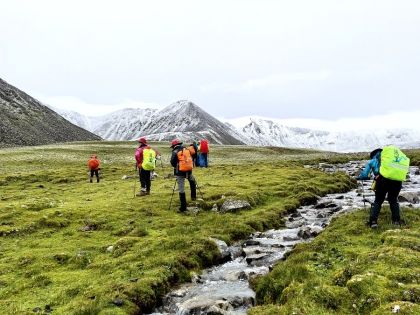
Tibet Kora
Lake Manasarovar Kora & Experience
Many pilgrims also perform a kora around Lake Manasarovar (about 90 km), though this is often done by vehicle.
Key Highlights:
-
Bathing Rituals: Pilgrims immerse themselves in the icy waters as a spiritual cleansing.
-
Ritual Offerings: Butter lamps, incense, and prayer flags line the lakeshore.
-
Scenic Beauty: The reflection of Mount Kailash on the lake at sunrise is one of Tibet’s most iconic sights.
-
Wildlife Encounters: Black-necked cranes, bar-headed geese, and other high-altitude species frequent the area.
Things to Do Beyond Pilgrimage
1. Photography
The contrasts of snow-capped peaks, turquoise waters, and endless skies make Kailash and Manasarovar a dream for photographers. Sunrise and sunset are particularly dramatic.
2. Wildlife Watching
Tibet’s high plateau is home to rare species such as Tibetan antelope, wild yaks, and Himalayan blue sheep. Birdwatchers can also spot migratory species near the lake.
3. Cultural Exploration
Nearby monasteries like Chiu Monastery and ancient ruins like Guge Kingdom offer glimpses into Tibet’s past. Interacting with local Tibetans also provides insight into their deeply spiritual lifestyle.
4. Spiritual Immersion
Even if you are not religious, participating in small rituals—such as spinning prayer wheels, tying prayer flags, or meditating by the lake—creates a meaningful connection to the sacred landscape.
Travel Tips
Health & Acclimatization
-
Spend at least 3 days in Lhasa before heading west.
-
Drink plenty of water, eat light meals, and avoid alcohol.
-
Consider consulting a doctor about medication for altitude sickness.
Packing Essentials
-
Layered clothing for unpredictable weather.
-
Sleeping bag for basic guesthouses.
-
Sunglasses, sunscreen, and lip balm for strong UV rays.
-
Personal medications and high-energy snacks.
Accommodation & Food
-
Expect simple guesthouses or monastery lodgings during the kora.
-
In larger towns, hotels are available with basic amenities.
-
Meals are simple Tibetan fare: noodles, tsampa, yak butter tea. Carry snacks for the trek.
Travel Permits
Foreign travelers must join an organized tour arranged by a registered Tibetan travel agency. Required documents include:
-
Tibet Travel Permit
-
Alien’s Travel Permit (for western Tibet)
-
Military Permit (for sensitive border areas)
Conclusion
Mount Kailash and Lake Manasarovar are not just destinations—they are life-changing experiences. Whether you seek spiritual renewal, cultural discovery, or pure adventure, this journey combines it all. From the breathtaking landscapes to the profound spiritual energy, every step on this pilgrimage leaves an indelible mark on the heart.
In 2026, especially in the auspicious Year of the Horse, countless pilgrims and travelers will gather in this remote corner of Tibet to walk in the footsteps of centuries of seekers. Will you be one of them?




